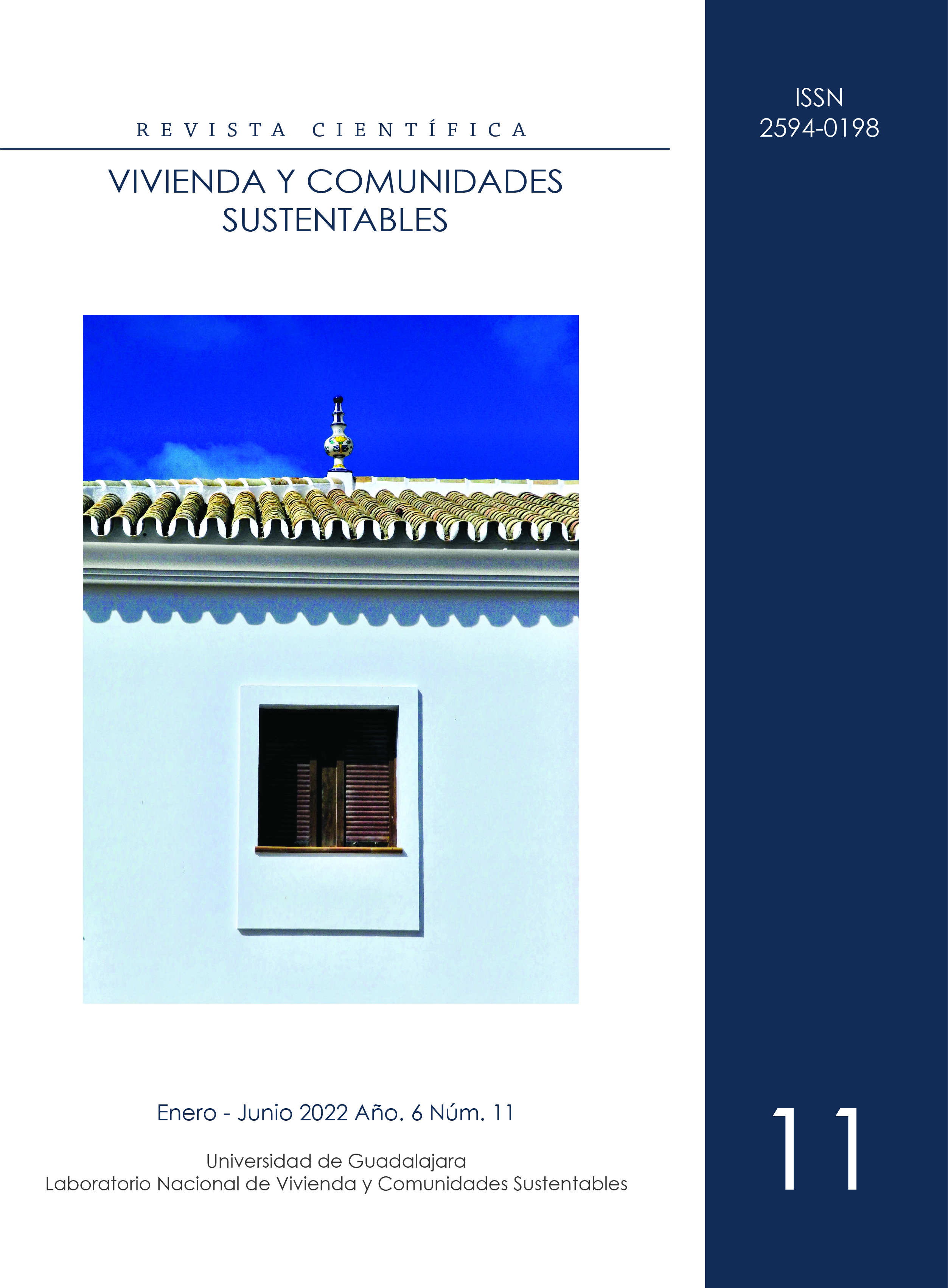Habitability a study from the social housing in Mexico as an inhabited space
DOI:
https://doi.org/10.32870/rvcs.v0i11.192Keywords:
Housing inhabit, habitability, inhabited spaceAbstract
The relationship between inhabited space and built space is a relationship that has traditionally been approached from the paradigm of habitability. Currently, for Mexico it has become a substantive research condition, as a result of social housing production based on spatial schemes that have not favored a dignified and inclusive life for large population groups in the country. Its design has been subject to normative restrictions prevailing in the provisions at a federal and local level, as well as those of the National Housing Plan (PNV) and the public housing policies of Mexico for more than 60 years. The need to study the person and his/her culture, as well as his/her relationship with the inhabited space and how it is inhabited is evident. Thus, we will focus on the analysis of the inhabited space and the built space under the premises of being and of staying in the house, both for the person who dwells, as well as for the dwelling. Therefore, the purpose is to study the inhabiting of being and staying, to assess how they influence the experience of living and the development of habitability as a process that occurs in the relationship between interior and exterior. The article is developed from the conceptual and normative dimension: the first is proposed from the identification of the characteristics of inhabiting-habitability, while the second is proposed from a longitudinal perspective, as a timeline.Metrics
References
Álvarez Vallejo, A., De Hoyos Martínez , J. E., Jiménez Jiménez, J. J., Valdés Gárces , J. E., & Romero Guzman, L. (2020). PENSAMIENTOS Y TECNOLOGÍAS: BIOCONSTRUCCIÓN EN LA VIVIENDA. En J. E. De Hoyos Martínez , J. J. Jiménez Jiménez, L. Romero Guzman, A. Álvarez Vallejo, & J. E. Váldés Gárces, Bioconstrucción para la Vivienda, Pensamiento y Técnicas. Toluca: Unoiversidad Autónoma del Estado de México, Facultad de Arquitectura y Diseño.
CONEVAL. (2018). Estudio Diagnóstico del Derecho a la Vivivenda Digna y Decorosa 2018. Ciudad de México: CONEVAL.
De Hoyos Martínez, J. E. (2010). La casa: origen de la conformación territorial, aportaciones epistemológicas al estudio del territorio. Toluca, México: Gobierno del Estado de México, Biblioteca mexiquense del bicentenario.
De Hoyos Martínez , J. E., Macias Ángeles, Y., & Jiménez Jiménez, J. J. (2015). Habitabilidad: desafío en diseño arquitectónico. Legado de Arquitectura y Diseño, 63-67.
De Hoyos Martínez, J. E., Alvarez V, A., & Jiménez J., J. d. (2015). Habitar la Vivienda. México, CDMX: Plaza y Valdes y Universidad Autónoma del Estado de México.
DIARIO OFICIAL DE LA FEDERACION. (07 de 02 de 2021). Programa Nacional de Vivienda 2008-2012: Hacia un Desarrollo Habitacional Sustentable. Obtenido de DIARIO OFICIAL DE LA FEDERACION: http://dof.gob.mx/nota_detalle.php?codigo=5076398&fecha=30/12/2008
DIARIO OFICIAL DE LA FEDERACION. (07 de 02 de 2021). Programa Nacional de Vivienda 2014-2018. Obtenido de DIARIO OFICIAL DE LA FEDERACION: https://www.dof.gob.mx/nota_detalle.php?codigo=5342865&fecha=30/04/2014
Doczi, G. (2012). El poder de los límites. Proporciones armónicas en la naturaleza, el arte y la arquitectura. Barcelona: Troquel.
Gazmuri Núñez, P. M. (2013). Familia y habitabilidad en la vivienda. Aproximaciones metodológicas para su estudio desde una perspectiva sociológica. Arquitectura y Urbanismo vol. XXXIV, no 1, 32-47.
Heidegger, M. (2016). Constriur, Habitar, Pensar. Teoría (5-6), 150-162.
Lindón, A. (2005). El mito de la casa propia y las formas de habitar. Scripta Nova Vol. IX, núm. 194, 741-798.
Maturana, H. ((1997) (2006)). De mnaquina y seres vivos, autopoiesis: la organización de los vivo. Santiago de Chile: Universitaria.
Mena Romaña, E. M. (2011). Habitabilidad de la vivienda de interés social prioritaria en el marco de la cultura. Cuadernos de Vivienda y Urbanismo. Vol 4, Num. 8, 296-314.
Morales, J. R. (1984). Arquitectónica. Chile: Editorial Universitaria.
Moreno Olmos, S. H. (2008). La habitabilidad urbana como condición de calidad de vida. Palapa, vol. III, núm. II, 47-54.
SEDATU. (2019). Programa Nacional de Vivienda 2019-2024. México: SEDATU.
Sulbarán Sandoval, J. A., & Rangel Rojas, R. H. (2018). Arquitectura y Urbanismo vol. XXXIV, no 1. Procesos Urbanos No. 5, 26-33.
https://doi.org/10.21892/2422085X.405
Valladares Anguiano, R., Chávez González, M. E., & López de Asiain Alberich, M. (2015). Indicadores urbanos de habitabilidad: ¿qué medir y por qué? . En R. V. Anguiano, Diversas visiones de habitabilidad (págs. 15-38). Puebla: RNIU.
Published
How to Cite
Issue
Section
License
Copyright (c) 2022 Vivienda y Comunidades Sustentables

This work is licensed under a Creative Commons Attribution-NonCommercial-NoDerivatives 4.0 International License.
The authors who publish in this journal accept the following conditions:
In accordance with the copyright legislation, Sustainable Housing and Communities recognizes and respects the moral right of the authors, as well as the ownership of the patrimonial right, which will be transferred to the University of Guadalajara for its dissemination in open access. Sustainable Housing and Communities does not charge authors for submitting and processing articles for publication. Authors may make other independent and additional contractual agreements for the non-exclusive distribution of the version of the article published in Sustainable Housing and Communities (for example, include it in an institutional repository or publish it in a book) as long as they clearly indicate that the work is published for the first time in Sustainable Housing and Communities.






